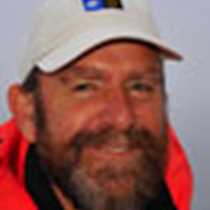Mull & Iona
Awakened by the deep rumble of the Lord of the Glens alarm clock at 0600, we were on the move again, out from the safe anchorage of Tobermory and south down the Sound of Mull. The clouds were starting to lift, the last veils of gentle rain sweeping across the vivid green landscapes of the mainland to port, and the basalt cliffs of Morvern streaked with white waterfalls from yesterday’s downpour. Weaving in and out of fishing boats, Caledonian MacBrayne ferries and hazardous skerries, we docked safely at Craignure, gateway to Mull.
Mull is the third largest of the Scottish islands, with 300miles of incomparable coastline and arguably the best wildlife community in Britain: countless otters, seals and dolphins, over 3,000 wild red deer and 33 pairs of golden eagles, the highest concentration in Europe. But it was not to be a day for eagles, with low clouds over the mountains and drizzles sweeping in from the west as we threaded the braes and glens of the mountains. The core of Mull is gigantic volcano which erupted 60million years ago; following the shoreline of Loch Scridain, the sea loch which leads to Iona, we could see the hillsides terraced by the successive sheets of lava which poured out from its core, building one atop the other in layers. Our driver, Steve, kept up an entertaining soliloquy as he deftly dodged cars on the long single-track road, creating as he spoke a lyrical account of the geology, culture, music, superstition, natural and human history of Mull, leavened with his own humorous musings on life. Was it his Celtic conjuring, or the kiss of Columba which turned a grey day into blue sky by the time we reached the Iona Ferry? The last test of pilgrim faith was the ferry crossing: Force 6 winds had churned the Sound of Iona into surging whitecaps, but there was a spectacle even here, with squadrons of black shags beating upwind, and pure white gannets slicing diagonally into the waves to skewer fish from the hidden shoals.
Iona: crucible of Celtic Christianity from the 6th century, retreat and resting place of St.Columba, “dove of the church”, who inspired a legion of disciples who spread Christianity back into England and far abroad through France, Switzerland and Italy. The island had been a retreat for Irish druids from the 5th century, became a burial ground for over 50 kings of Scotland, Ireland and Norway, and draws pilgrims still, from all over the world. From the tiny chapel of St.Oran, to the glory of Iona Abbey against the blue hills of Mull, this tiny, peaceful island has been a spiritual powerhouse for centuries. There was much to reflect on as we retraced our route across Mull, pausing to visit Duart Castle, ancestral home of the clan Maclean, a fortress symbolic of the warring tribal factions of Scotland. Much has changed: Macleans are now more famous as a brand of toothpaste to the average citizen. The chiefs and clans have lost their power; they no longer hold influence in this wild land. We should be thankful that the peace and persuasion of Columba now reign where once there was naught but the clashing clans and claymores of the Macleans. Sleep peacefully: we shan’t be murdered in our beds tonight!
Call +1.800.397.3348 or contact your travel advisor




